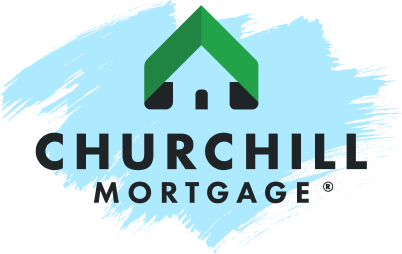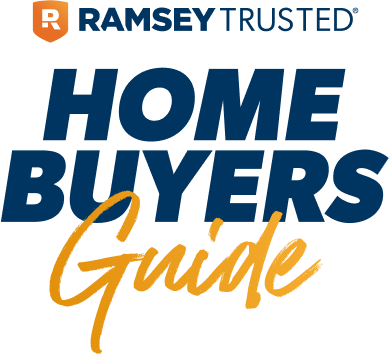
Choosing the Right Mortgage
Look at you go! You’re on your way to buying your first house! Now it’s time to get serious. If you’re going the mortgage route, you need something to show home sellers just how serious you are: a preapproval letter.
What’s a Preapproval Letter and Why Get One?
First, don’t confuse prequalified with preapproved. A lender can prequalify you to buy a house after a quick conversation about your income, assets and down payment. But getting preapproved will take a little more work.
A lender will need to verify your financial information and submit your loan for preliminary underwriting. That extra effort will pay off when you begin your home search. A preapproval letter shows your “throw me the keys” level of seriousness as a buyer to sellers.
Imagine a seller, who’s eager to move, scanning through buyer offers and finding that you’re already preapproved for a mortgage. They’ll be relieved and confident you’re ready to do the deal—no ifs, ands or buts about it. Plus, since your information is already in the lender’s system, being preapproved speeds up the loan process—which definitely helps in a competitive market.


Get the Right Mortgage From a Trusted Lender
Get a competitive edge in the market with Churchill Mortgage.
They'll help you choose the best mortgage with a locked-in rate.

How Do You Get Preapproved?
Sure, having a mortgage lender shove your financial life under a microscope probably isn’t your idea of fun. But if you gather all the documents you need before meeting with a lender, the process will be a piece of cake. Here’s what your lender will ask for:
Identification
- Driver’s license or U.S. passport
- Social Security card or number
- A copy of the front and back of your permanent resident card (if you aren’t a U.S. citizen)
- Credit history (or talk to our friends at Churchill Mortgage for manual underwriting if you have no credit score)
Income
- Employment verification (proof of status and yearly salary)
- Pay stubs covering the last 30 days
- W-2 forms from the last two years
- Proof of any additional income
- Federal income tax returns (personal and business) with all pages and schedules from the last two years
Assets
- Bank statements proving you have enough money to cover the down payment and closing costs
- A gift letter saying your down payment is a gift, not an IOU (if a family member or friend is helping you pay for your down payment)
- Latest quarterly statements for asset accounts like your 401(k), IRA, stock accounts and mutual funds
What Exactly Is a Mortgage?
Okay, now that we have the preapproval part straight, what about the mortgage itself? When you take on a mortgage, you’ll be paying back more than just what you borrowed from a lender. There are a bunch of other expenses packed inside that monthly payment.
To help you familiarize yourself with what you’ll actually be paying for each month, here is a complete breakdown of what’s included in a monthly mortgage payment:
- Principal
Remember, this is the original amount of money you borrow from your lender to buy a house. It’s the main thing you want to knock out fast as you’re making house payments.
- Interest
Lenders are eager to let you borrow their money because they make a profit on what they loan you by charging a fee called interest—calculated as a percentage of the principal.
- Property Taxes
Local governments raise money through property taxes to fund things like schools, law enforcement, fire departments and (supposedly) fixing potholes.
- Homeowners Insurance
Since your mortgage lender will require you to have coverage, this will add a few more dollar signs to your house payment. But it’ll (literally) pay off if you ever have a fire or something like it. So set up a policy with one of our trusted insurance agents.
- Private Mortgage Insurance (PMI)
As we learned in the last chapter, PMI is a fee you pay on top of your mortgage if your down payment is less than 20%. It goes toward protecting your lender (not you) from losing money if you stop making payments on your loan.
In addition to your mortgage payment, you might also have to pay a monthly homeowners association (HOA) fee. Basically, HOA fees are for community maintenance and upgrades. If you buy a house in a community that has an HOA, you automatically become a member and will be expected to pay the fee and keep your home up to HOA standards to help increase the overall property value in that community.
As a reminder, if the total monthly house payment is more than 25% of your take-home pay, take it as a red flag that you’re just not ready to buy a house yet—or try finding a cheaper house or saving a bigger down payment to make the numbers work.

“As a reminder, if the total monthly house payment is more than 25% of your take-home pay, take it as a red flag that you’re just not ready to buy a house yet.”

What Mortgage Option Is Right for You?
Now let’s cover types of mortgages. Taking on a mortgage is no walk in the park. A bad choice here can offset your other financial goals or even lead you down a path to foreclosure. That’s why getting the right mortgage is so important! If you set boundaries on the front end, it’s easier to find a home you love that you can pay off fast.
The only kind of mortgage we recommend is a 15-year fixed-rate conventional loan. Here are the main reasons why it’s the best:
- Helps you get out of debt faster.
A mortgage with a 15-year term keeps you on track to pay off your mortgage in half the time compared to one with a 30-year term.
- Saves you thousands (even hundreds of thousands) of dollars in interest fees.
While a 15-year mortgage comes with a higher monthly payment than a 30-year mortgage, a larger amount of that payment goes straight toward paying down the principal (the portion that actually pays back your loan, as opposed to interest fees).
- Protects you from rising interest rates.
A fixed-rate loan is one where your interest rate is secure for the life of the loan. So you’ll never have to worry about paying a higher interest rate on your mortgage than when you first took it out.
Avoid These Rip-Off Mortgages
Any other type of mortgage than a 15-year fixed-rate one will drown you in interest and fees and keep you in debt for decades. We don’t want that to happen to you! To safeguard yourself, here are some rip-off mortgages to avoid:
- 30-Year Mortgage
It can be tempting to choose a 30-year term for your mortgage because the monthly payments are lower than one with a 15-year term. But the problem with 30-year mortgages is that the interest rate will be higher and you have to keep making payments on it for decades—meaning you’ll pay thousands (we’re talking tens or even hundreds of thousands) of dollars more over the life of the loan compared to a 15-year term!
- ARM Loan (Adjustable-Rate Mortgage)
This option offers a lower interest rate (and monthly payment) for the first few years. But the risk of higher interest rates down the road is transferred from the lender to you. When the rate increases, the payment can quickly become too much for you to afford. While you may start out with a low interest rate, it can go up. And up. And up!
- FHA Loan (Federal Housing Administration)
Sure, an FHA loan will allow you to buy a house with a down payment as little as 3.5%. But in exchange, you’ll be charged an extra fee for the life of the loan—on top of all the extra interest you’ll pay and decades you’ll spend in debt for not saving up a big down payment. Bad idea.
- VA Loan (U.S. Department of Veterans Affairs)
A VA loan helps veterans get into a house with no money down at all! But when you purchase a home with zero money down and things change in the housing market, you could end up owing more than the market value of your home—yikes! Also, VA loans come with a funding fee. No thanks.
- USDA Loan (U.S. Department of Agriculture)
A USDA loan is designed to help people who can’t really afford to buy a home yet to get into a house with zero money down. But again, that’ll crush your budget over the years with all the added interest payments! Plus, if you can’t afford to put any money down on a house, you’re not in an ideal place to handle maintenance and all the other unexpected costs that come with homeownership.
If you want to dive deeper into these mortgage mistakes and learn how to avoid them, check out this episode of Real Estate the Ramsey Way.
When you’re ready to get moving on your mortgage preapproval and want to work with a lender who follows the principles we teach, connect with our friends at Churchill Mortgage!


